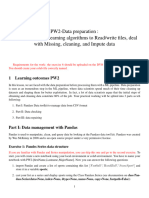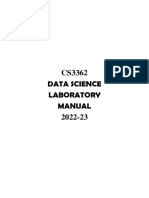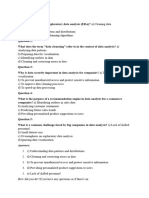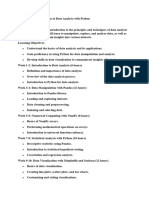0% found this document useful (0 votes)
41 views9 pagesSome Exercises
The document describes several exercises for practicing different data analysis techniques. The exercises cover topics like data cleaning, exploratory data analysis, regression, clustering, classification, and visualization. Example solutions are provided for some basic exercises involving data cleaning, EDA, and visualization.
Uploaded by
Eralda FRROKUCopyright
© © All Rights Reserved
We take content rights seriously. If you suspect this is your content, claim it here.
Available Formats
Download as DOCX, PDF, TXT or read online on Scribd
0% found this document useful (0 votes)
41 views9 pagesSome Exercises
The document describes several exercises for practicing different data analysis techniques. The exercises cover topics like data cleaning, exploratory data analysis, regression, clustering, classification, and visualization. Example solutions are provided for some basic exercises involving data cleaning, EDA, and visualization.
Uploaded by
Eralda FRROKUCopyright
© © All Rights Reserved
We take content rights seriously. If you suspect this is your content, claim it here.
Available Formats
Download as DOCX, PDF, TXT or read online on Scribd
/ 9































































